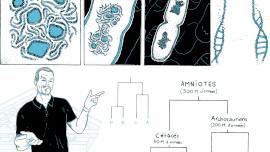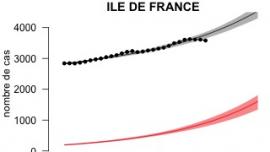Publication
2015

How Ecology and Landscape Dynamics Shape Phylogenetic Trees
Whether biotic or abiotic factors are the dominant drivers of clade diversification is a long-standing question in evolutionary biology. The ubiquitous patterns of phylogenetic imbalance and branching slowdown have been taken as supporting the role of ecological niche filling and spatial heterogeneity in ecological features, and thus of biotic processes, in diversification. However, a proper theoretical assessment of the relative roles of biotic and abiotic factors in macroevolution requires models that integrate both types of factors, and such models have been lacking. In this study, we use an individual-based model to investigate the temporal patterns of diversification driven by ecological speciation in a stochastically fluctuating geographic landscape. The model generates phylogenies whose shape evolves as the clade ages. Stabilization of tree shape often occurs after ecological saturation, revealing species turnover caused by competition and demographic stochasticity. In the initial phase of diversification (allopatric radiation into an empty landscape), trees tend to be unbalanced and branching slows down. As diversification proceeds further due to landscape dynamics, balance and branching tempo may increase and become positive. Three main conclusions follow. First, the phylogenies of ecologically saturated clades do not always exhibit branching slowdown. Branching slowdown requires that competition be wide or heterogeneous across the landscape, or that the characteristics of landscape dynamics vary geographically. Conversely, branching acceleration is predicted under narrow competition or frequent local catastrophes. Second, ecological heterogeneity does not necessarily cause phylogenies to be unbalanced--short time in geographical isolation or frequent local catastrophes may lead to balanced trees despite spatial heterogeneity. Conversely, unbalanced trees can emerge without spatial heterogeneity, notably if competition is wide. Third, short isolation time causes a radically different and quite robust pattern of phylogenies that are balanced and yet exhibit branching slowdown. In conclusion, biotic factors have a strong and diverse influence on the shape of phylogenies of ecologically saturating clades and create the evolutionary template in which branching slowdown and tree imbalance may occur. However, the contingency of landscape dynamics and resource distribution can cause wide variation in branching tempo and tree balance. Finally, considerable variation in tree shape among simulation replicates calls for caution when interpreting variation in the shape of real phylogenies.










